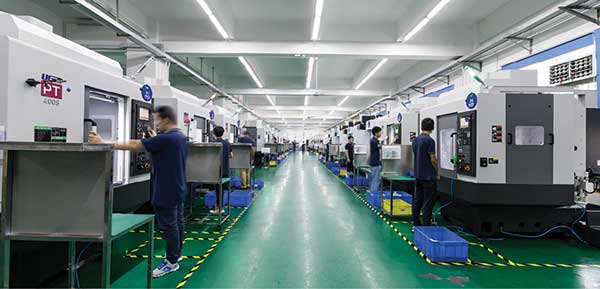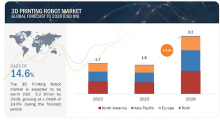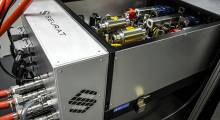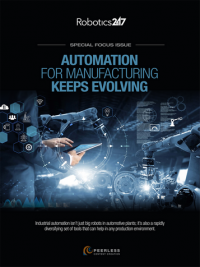This March, as coronavirus-induced travel restrictions and supply chain disruptions wreaked havoc around the world, additive manufacturing (AM) or 3D printing found itself in an envious position—a position of advantage.
Particularly in personal protective equipment (PPE) production, 3D printing attracted headlines and media spotlights. Without the need to set up tooling or create molds, 3D printers, from hobbyists to professional houses, were able to swiftly make and deliver PPEs to hospitals and clinics facing short supply. (For more, read the related stories listed at the end.)
“There was the recognition that 3D printing is a viable manufacturing technology for medical devices. Previously, there were still lots of questions. But because the industry came together and put new products into the market in weeks, not years, it showed it could be done,” observes Luis Baldez, senior manager of market development, HP 3D Printing.
During the shutdown, Greg Paulsen, director of Application Engineering for on-demand manufacturing service provider, Xometry, says he saw among his customers, “the willingness to explore 3D printing as a way to make end-use products.” He adds, “Some customers found that the lead time to move to molding or casting just didn’t fit their deadline. We made a lot of them believers in AM.”
The pandemic is not over yet, but manufacturers are finding ways to reopen and resume production while adhering to social distancing and safety requirements. In this article, we explore the role of 3D printing and on-demand manufacturing service providers in preparing for the post-COVID future.
Onshoring and diversification
For many U.S. manufacturers, the pandemic was a wakeup call. The tried-and-true formula to make products at low cost overseas and ship them to the target markets began to break down. The supply chain that had stood the test of time began to slip. Onshoring—bringing production closer to home—was already occurring before the pandemic, but the latest turn of events may be accelerating it.
U.S.-based on-demand manufacturing service providers found themselves in greater demand, swarmed by calls from manufacturers who needed to make up for the delays from suppliers in virus-affected Asia.
“When everything shut down, we were in full gear,” recalls Paulsen. “We were working with established businesses that still had to make parts but found their supply chains shut down.”
Xometry’s network is made up of more than 5,000 shops. Of them Paulsen estimates about 3,000 are based in the U.S., 2,000 are in Europe and a smaller number are in Asia and other locations. Thus, at the peak of the pandemic when Chinese manufacturers were under lockdown, Xometry’s U.S.-based partners had sufficient capacity to pick up the orders.
“During COVID-19, we saw a drop in users who were individuals and hobbyists, [and] those who were doing personal projects, but we were discovered by people who have not used us before,” recalls Paulsen.
Headquartered in San Francisco, Fictiv also relies on its network and automated quoting system to offer on-demand manufacturing service.
“Businesses that could adapt fast and were digitally enabled could survive the disruptions and even thrive by supporting the need for test swabs and other rapid response solutions for the frontline fight against COVID,” says Dave Evans, co-founder and CEO of Fictiv. “It has been a chance for both 3D printing and digital manufacturing ecosystems to show why they are so important to the future of manufacturing and [the] supply chain.”
Eventually the danger of the pandemic will fade with the development and availability of affordable vaccines. However, warfare and political turmoil will continue to disrupt manufacturing from time to time. So a wholesale transfer of production from one region to another (say, from Asia back to the U.S.) is not necessarily the best strategy.
“As digitally enabled manufacturing systems deliver consistently from any printer in any location, then perhaps manufacturing geography and all the incumbent issues like politics, tariffs etc., become less important or even irrelevant,” says Evans. “It is easy to see how you can upload a design, select the best process, the best location, the best delivery method and the best price for every part within every product.”
“There have always been supply chain challenges, but we hadn’t seen a case where the entire country shut down. So even if you had multiple fabricators in that country, you were out of luck,” says Paulsen. “After this, people will start thinking of having redundant supply chains, more flexible supply chains.”
In other words, distributed supply chain is a safer bet.
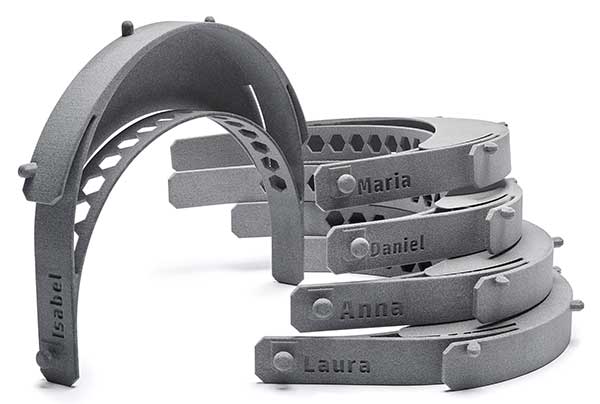
Personalized face shields, printed in HP Jet Fusion systems, point to mass customization enabled by enterprise-scale AM. Image courtesy of HP.
Beyond PPE
HP estimates that its community of partners and customers have produced more than 5 million 3D-printed parts using HP’s Multi Jet Fusion technology to help health care workers on the front lines. Initially, the almost-instantaneous AM capacity was the best way to answer the urgent call for PPE production, but as the need for PPE evolves, traditional manufacturers are catching up too.
“Now that all the countries are trying to open up and people are going back to work, you need PPE not just in hospitals but also in schools, office buildings, military, retail and any other places where people might gather. So the need is going beyond health care,” points out Baldez.
“For the first couple of weeks, 3D printing helped as a stop-gap measure,” says Paulsen. “But additive is just one form of manufacturing. For scale, to hit the volume of PPE needed per day at a reasonable cost, moving to a more traditional mass-production method makes sense.”
In April, Fictiv began devoting some of its production capacity to the fight against COVID-19. It announced hospitals and health care providers can order “face shields in batches of up to 10,000 per order at cost for shipment as fast as one day.”
“It isn’t as simple as 3D printing or CNC, or any other process. The ideal solution is to be able to explore many manufacturing technologies for each part and to pick the best one in each case,” cautions Evans.
3D printing has also altered the commodity PPEs with fresh innovations—customizable masks, for example. WASP, a startup that developed versatile 3D printing and milling machines, launched the My Face Mask project, allowing users to print custom-fitted masks with replaceable filters.
The company uses open-source technology to develop a way to obtain the target user’s face geometry using photogrammetry. It employs its Delta WASP 4070 printer to produce the mask in warp-resistant polycaprolactone materials or the more flexible F1 Skin Contact Flex materials.
In a similar project called MyMask, physicians and technologists came together to launch a custom-fitted mask creation portal. It uses the depth-sensing camera in iPhone 10 and newer models to let users to easily scan and upload their face geometry. The project is supported by simulation software maker MSC Software, part of Hexagon.
“Some physicians found that they like the 3D-printed face shields more than the traditional ones; they are lighter and have better fit. If the pandemic hadn’t happened, they might not have discovered that,” says Baldez.
Adapting to market demands
As a result of the impact of the COVID-19 pandemic, many companies with AM capacity decided to pitch in to offer relief to the overtaxed medical equipment manufacturing sector. Others saw a drop in demands for their usual products, so they shifted to medical supplies that were in higher demand for pure survival. No matter the reason, these experiments revealed one of AM’s greatest benefits—flexibility.
U.S.-based Superfeet usually uses its HP Jet Fusion printers to make custom insoles based on buyers’ feet scans. The company has already secured a partnership with New Balance to provide 3D-printed insoles for New Balance shoe buyers. But in March, when the pandemic took a toll and business was on a pause, the company announced, “We’re opening up capacity on our HP Jet Fusion printers and setting up a manufacturing line for producing life-saving medical equipment.”
With 3D printing, “one day you can produce face shields, another day nasal swabs, then another day go back to automotive parts,” says Baldez.
Ad hoc use of AM to produce something originally meant for machining or molding is quite common, but that is not the best use of the technology.
“To get the most out of AM, you really have to start thinking about it in the design phase,” says Paulsen. “Lattice structures, for example, are designed for AM. So are multi-part assemblies that can be consolidated into one. You need to have AM in your design intent.”
With its sights set on large-scale adoption of AM in enterprises, HP in October announced it is sprucing up its software for automating and managing complex print workflows, dubbed HP Universal Build Manager Powered by Dyndrite. The news came out in advance of the Formnext Connect, a virtual conference for the AM community.
“Automation, software and data are key to delivering mass-customization of parts and unlocking the full potential of large-scale AM,” says Ramon Pastor, GM and global head of 3D Printing and Digital Manufacturing, HP.
HP’s COVID-related projects involved mostly the HP Jet Fusion printers capable of printing in polymer. The company also offers metal 3D printing via its HP Metal Jet technology, working closely with production partners such as Germany-based GKN and the San Francisco Bay Area-based Parmatech.
About the Author
Follow Robotics 24/7 on Linkedin
Article topics
Email Sign Up

